| 2005
to 2012 and Decommissioning |
|
|
The asthma was brought on by a
wood dust allergy which not only stopped me from building aircraft, but
also cost me my job in a woodwork shop. In April 2005, I bought a WW2 Jeep
to tinker with instead. At some of the first military events I attended,
mention of the B-17 caused interest, so at some of the local events, I
took the B-17 on static display.
In the first image, it is seen
at Tanfield Railway, one of the first events I took it to. At this point
it was still airworthy. The occasions I did take it out, I realised the
physical effort involved was still going to prevent me from taking it long
distances and lugging it around an airfield. |
|
|
|

The B-17 on static display at the North East Aircraft Museum "Jeeps & Jets 2010" weekend. All the radio equipment and engines were still installed, but it now sports some scale props to improve its look on the ground. |
| I
became more involved with the military vehicles throughout 2005 and '06.
As fuel costs continued to rise, I found I was able to attend more events
with the Jeep than I could with the B-17, especially since I'd lost my
original job and was now working part time.
I came to realise that I had
lost interest in flying, as after the B-17, nothing else gave me the same
buzz. As the years passed by, the batteries failed, but there was little
point in spending money replacing them. Then the final nail in the coffin
was the LMA changing their show rules to exclude 35MHz radios from public
events. I had no intention of purchasing two new 2.4GHz radios to operate
the B-17. |
|
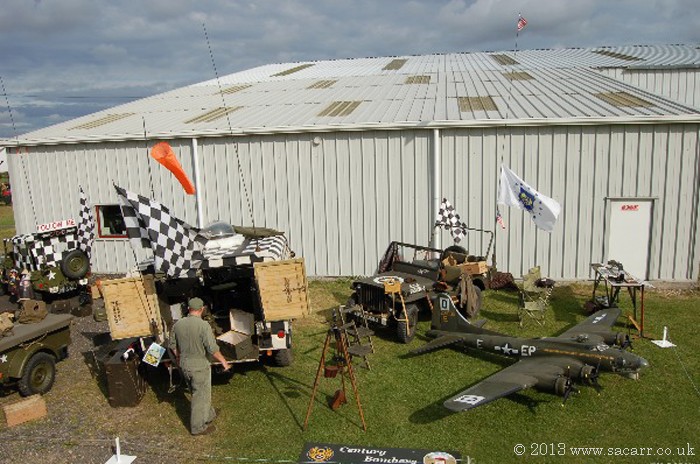
|
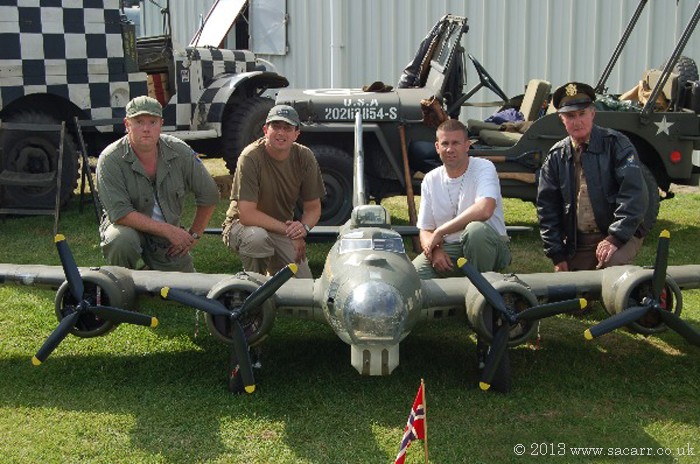
|
| In
2012, after eight years on the ground, and an airframe that was 18 years
old, I decided that the likelyhood of ever flying the B-17 again were
remote. It was time to ground the B-17 permanently, and perpare it for
permanent static display.
The engines and radio would be
stripped out and dummy engines made to fill the cowlings. I made a pattern
for one cylinder and took a silicone mould from it. Thirty six resin
cylinders were then cast in polyester resin. Chipboard was used for the
crankcase, with other details made from wire and resin model board. The
four engines were painted and weathered before fitting to the nacelles. |
|

|
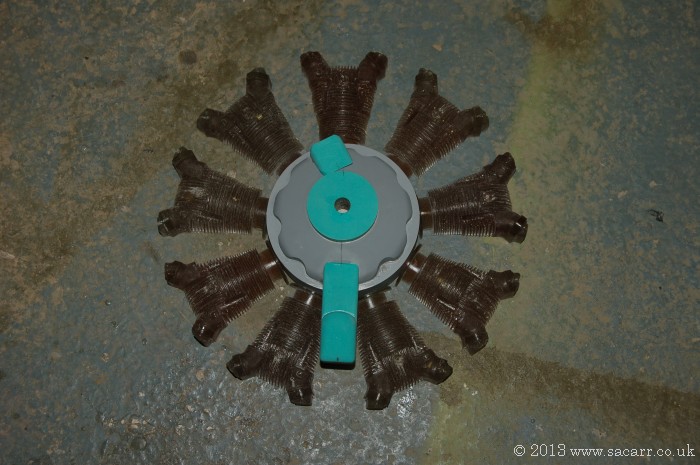
|

|

|
| It
took a few days to strip the B-17 and touch up some transport damage. The
engine cowlings also needed some holes filling where they were cut to
clear the exhausts and spark plugs. During this time, it was dismantled
into each separate airframe section which made it more managable to strip
out the components. |
|

|
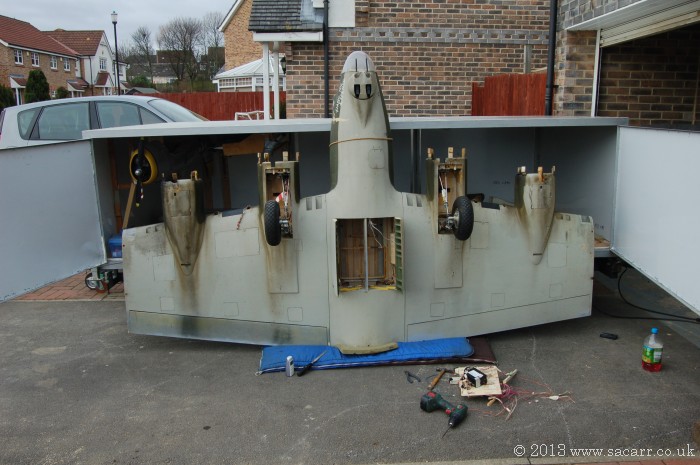 |
| Below
- The B-17 about to be re-assembled. The dummy engines have now been
fitted, together with the repaired cowls. |
|
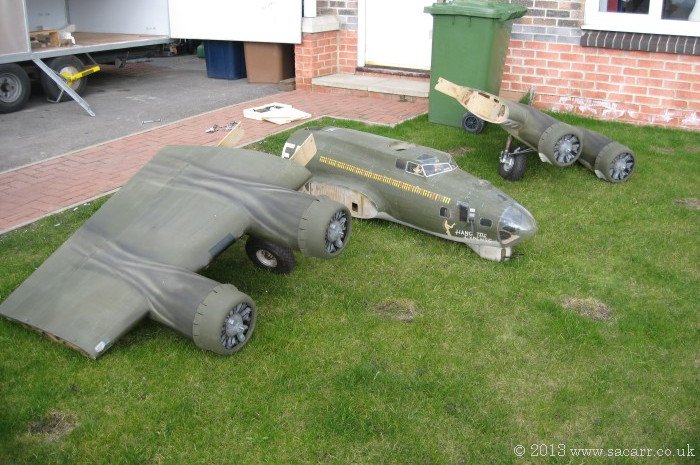
|
 |
